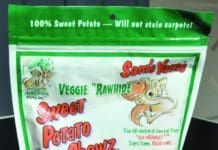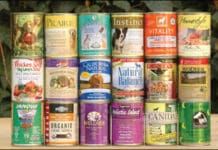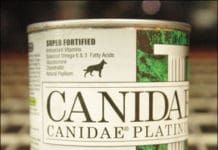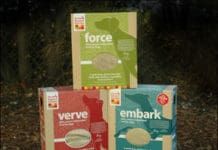How to Identify and Pick Top Quality Dog Treats
Surely there is no such person as a dog owner who never gives his or her dog a treat. We all like to see our dog's tail wag, and his face light up with attentive anticipation, right? But how do you know that the treats you give him are healthy? It's actually pretty simple. As with every food you buy (for yourself or your dog), it's all about the ingredients. If you do not already read the label of every food item you consider buying, get in the habit! Most of the information you need to know in order to determine the product's quality is legally required to appear on the label. Ingredients are listed on the label by weight; there is more of the first ingredient on the list present in the treat than the second ingredient, and so on. (One exception: If equal amounts - by weight - of different ingredients are present, the manufacturer can list those ingredients in any order; that is, as long as they are still in order relative to the other ingredients). The first few ingredients on the list are the most significant; since they comprise the majority of the content, they should be especially high in quality.
Best Dog Training Treats for Different Training Scenarios
Experiment with a wide variety of foods to find out what treats your dog loves most. If higher-value treats don't work, remove your dog to a less distracting environment, gradually increasing distractions as he's ready to handle them.
Whole Dog Journal’s 2009 Dry Dog Food Review
What's the best food for your dog? It's a question that only you can answer - because you are the only one who is in a position to gauge, on a daily, monthly, and yearly basis, how your dog responds to what you feed him. That said, we can give you some tips to guide you into the right section of your local pet supply store - that is, past the lowest-cost, lowest-quality foods; past the higher-cost but still low-quality posers; and into the area where the top-quality foods are found. Take note: They are expensive, perhaps prohibitively so, especially for families with several large dogs to feed. But you can't expect to pay hamburger prices for filet mignon, and it's the quality (and thus price) of the ingredients that set the top-quality foods apart. Dry food is not the healthiest diet for your dog. If you want to provide the very best, most natural diet possible for your dog, you'd feed a well-researched, home-prepared diet comprised of fresh foods. Or, next best, a well-formulated, commercially made frozen raw or dehydrated diet. Next best would be a top-quality wet food; even poor quality wet foods usually contain a higher percentage of animal protein (and a much lower percentage of grain) than good dry foods. Of all of these forms of dog food, kibble is probably the least natural for the dog. But its popularity is mainly based on three factors: It is relatively stable and therefore very convenient for the owner to buy, store, and feed. It's usually less expensive, calorie for calorie, than other forms of food with comparative ingredients. And most dogs do fine on a dry food diet.
Whole Dog Journal’s 2009 Canned Dog Food Review
We like canned food for dogs. It's more expensive than dry, but good varieties of canned dog food are arguably healthier than comparable dry dog foods, due to the higher inclusion of animal proteins and the higher moisture levels. Both of these things are closer to the dog's evolutionary diet than dry diets that contain a lot of grain. Some dog owners stopped buying wet dog food following the spring 2007 pet food recalls of foods that contained melamine and/or cyanuric acid. Given the fear and lack of information in the early days of the recall, this made sense. Now, however, we know more about the factors that led to the recalls, and we feel more certain than ever that wet pet foods offer health benefits to many dogs - and that our recommendations for choosing wet dog foods can help owners identify the safest, healthiest products available.
Homemade Low-Fat Dog Food Diets
Seven-year-old Annie looks terrific now, but she weighed 20 pounds less when first diagnosed with EPI. Annie's owner enjoys cooking for her dogs now that she has learned how to streamline the shopping, preparation, and storage. Keely is an active agility dog. She requires a low-fat diet to prevent ill effects of hyperlipidemia, which is common in Miniature Schnauzers. Rowdy, a 12-year-old Rhodesian Ridgeback, needs a low-fat diet that doesn't trigger painful gas attacks." Rocky is finally a good eater!"
More Unconventional Dog Food
Any time we aspire to review the best products in a given category, we inadvertently miss some. Last month, we highlighted some interesting novel...
Healthy Low-Fat Diets For Dogs With Special Dietary Needs
Some low-fat recipes for dogs are excessively low in fat, providing as little as 5 to 8 GFK, with as much as seven times more starches than meat. With very few exceptions, its not necessary to feed such an extremely low-fat diet to dogs recovering from or prone to pancreatitis or with other forms of fat intolerance, nor is such a diet likely to be nutritionally adequate, regardless of how many supplements you add.
High Quality Dog Food in its Various Forms
knowledgeable owners who would recognize the signs of nutritional deficiencies
More On Meat
I felt compelled to send a response to Patricia Coale’s letter (in the August 2008 issue) about the article on green tripe (“How Green Is Your Tripe?” July 2008). I wholeheartedly agree with her that the community in which we live is absolutely unaware of the atrocities committed to factory farm animals. I have actually assisted an animal rights activist to help get Proposition 2, the Prevention of Farm Animal Cruelty Act, on the 2008 California ballot.
Pasture-Fed Animals Provide Healthier Meat and Dairy Products for Your Dog
For years its advocates have claimed that pasture feeding – letting farm animals live and graze on grass – results in meat, poultry, eggs, and dairy products that are more nutritious than the same foods from grain-fed animals, especially those raised in confinement.Now the demand for “pasture-fed” or “grass-fed” meat is so high that last November, the U.S. Department of Agriculture implemented regulations for labels using those terms. However, the new standard was immediately criticized for being inadequate by the American Grassfed Association and other organizations. With confusion at an all-time high, how can consumers make the best ingredient choices for themselves and their pets?
Pet Food Politics
Were you one of the millions of concerned dog owners who struggled to follow and make sense of the pet food recalls last year? If so (and what dog owner wasn’t), I predict that you’ll find Pet Food Politics: The Chihuahua in the Coal Mine to be the most riveting book you’ll read this year. Recently released by the University of California Press, Pet Food Politics provides an in-depth look at the record-setting (and not in a good way) pet food recalls in 2007. We have a review of the book, and an interview with the author, renowned food industry expert Marion Nestle, PhD.
Green Tripe for Dogs
Voss kept her dogs supplied with fresh tripe


















